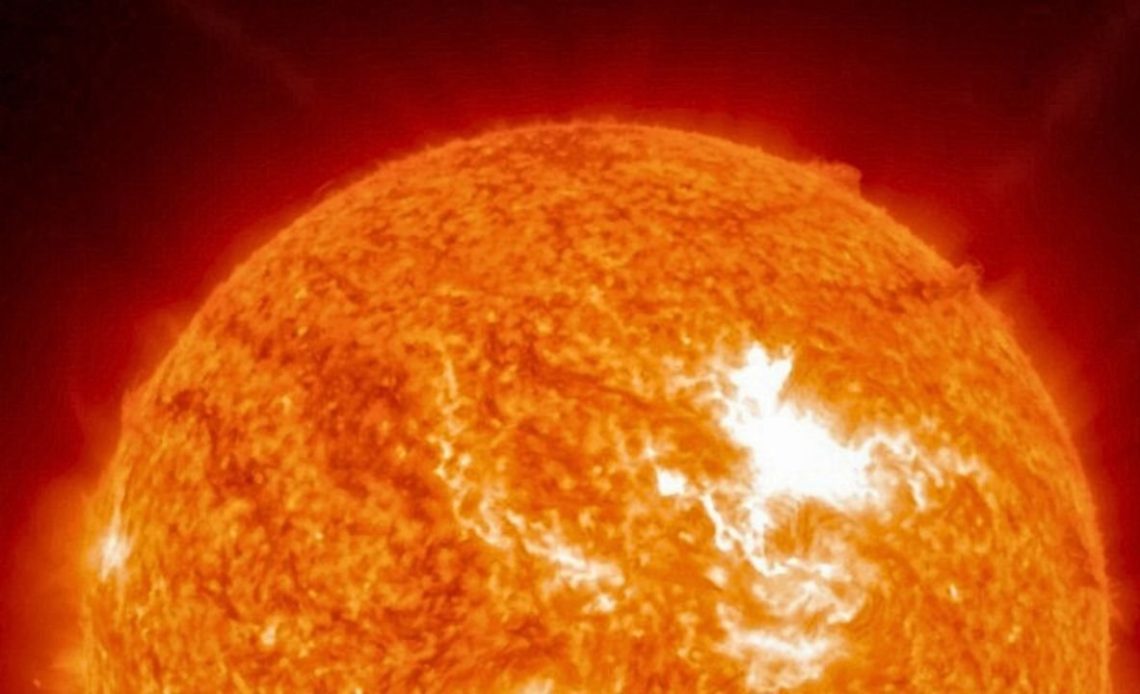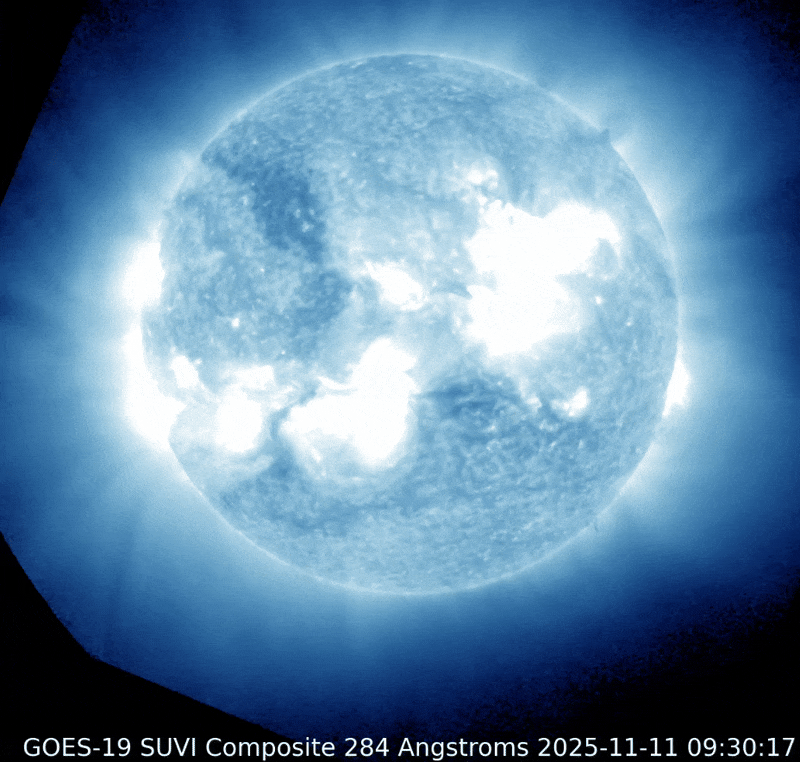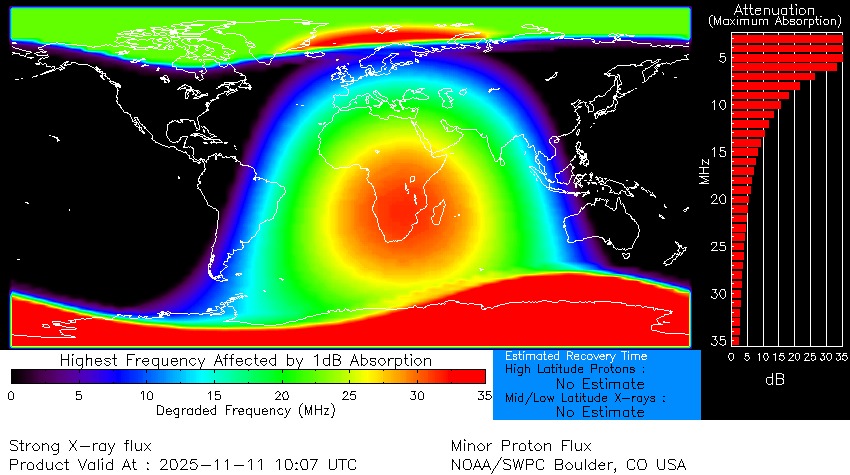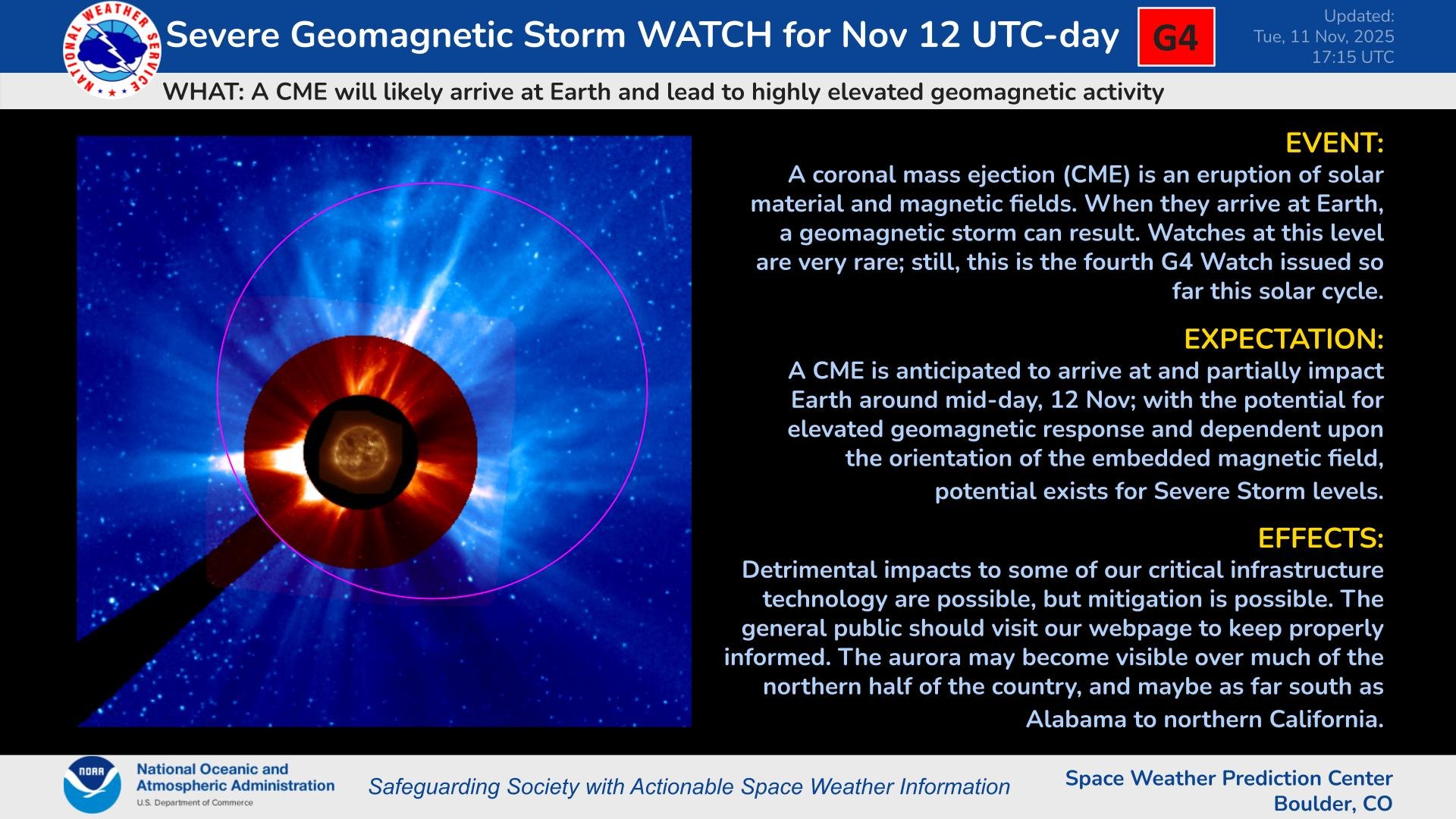

The sun erupted in spectacular fashion this morning (Nov. 11), unleashing a major X5.1-class solar flare, the strongest of 2025 so far and the most intense since October 2024.
The eruption peaked at 5 a.m. EST (1000 GMT) from sunspot AR4274, which has been bursting with activity in recent days. The blast triggered strong (R3-level) radio blackouts across Africa and Europe, disrupting high-frequency radio communications on the sunlit side of Earth.
This outburst is the latest in a series of intense flares from AR4274, which also produced an X1.7 flare on Nov. 9 and an X1.2 on Nov. 10. Those flares were accompanied by coronal mass ejections (CMEs) that could combine and impact Earth overnight tonight, possibly triggering strong (G3) geomagnetic storm conditions and widespread auroras, according to NOAA’s Space Weather Prediction Center. The CME released today could also join the party as it speeds toward Earth at 4.4 million mph. NOAA predicts the CME could impact Earth around midday on Nov. 12. With this third CME added to the mix, it’s possible that we could experience severe (G4) geomagnetic storm conditions.
NASA M2M SWO estimate the speed of the CME at 1856 km/s – a very fast CME! The animation of the CME in Cor2 data is absolutely spectacular. Big, fast CME. Bulk headed for us. I think it is safe to say this will be one of the most impressive near side CMEs of the cycle (fingers… https://t.co/nkNhspZo9i pic.twitter.com/9dRXkiSAPSNovember 11, 2025

Solar flares are ranked by strength in five classes, A, B, C, M and X, with each step representing a tenfold increase in energy output. X-class solar flares are the most powerful kind and the number following the X describes the flare’s intensity. At X5.1, this latest eruption sits toward the top of the scale.
The eruption sent a surge of X-rays and extreme ultraviolet radiation toward Earth, ionizing the upper atmosphere and causing widespread radio signal degradation. Strong (R3) radio blackouts were recorded over Africa and Europe.

This active region has become one of the most prolific solar flare producers of Solar Cycle 25, marking a fiery peak in what’s already been an extraordinary week for solar activity.
The CME released this morning during the X5.1 solar flare is forecast to reach Earth on Nov. 12. According to NOAA, the CME could trigger severe (G4) geomagnetic storm conditions on Nov. 12.

Author: Daisy Dobrijevic
Source: Space.com
Reviewed By: Editorial Team



